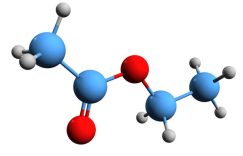Polyimide (PI) is a class of high-performance polymers known for their exceptional thermal stability and electrical properties. However, despite their robust nature, PIs can undergo degradation at low temperatures through various mechanisms. Here are the primary reasons why polyimides exhibit low-temperature decomposition:

-
Depolymerization: At elevated temperatures, the imide rings in the polyimide backbone can undergo scission, leading to the formation of smaller molecules. This process, known as depolymerization, results in the breakdown of the polymer chains and a decrease in the molecular weight of the material. As the temperature increases, the rate of depolymerization accelerates, contributing to the degradation of the polyimide.

-
Chain Scission: Another mechanism responsible for low-temperature decomposition in PIs is chain scission. This process involves the breaking of chemical bonds within the polymer chains, often initiated by the presence of impurities, defects, or exposure to high-energy radiation. Chain scission can result in the formation of smaller polymer fragments, oligomers, and other volatile species. The extent of chain scission depends on the severity of the conditions and the specific structure of the polyimide.

-
Thermal Oxidation: In the presence of oxygen, polyimides can undergo thermal oxidation, which involves the reaction of oxygen with the polymer chains. This process leads to the formation of various oxidation products, including carbon dioxide, water, and nitrogen oxides. Thermal oxidation can occur even at relatively low temperatures, especially in the presence of catalysts or under high-pressure conditions. The rate of oxidation increases with increasing temperature and oxygen concentration.
-
Rearrangement Reactions: Certain polyimides are susceptible to rearrangement reactions at low temperatures. These reactions involve the migration of atoms or functional groups within the polymer chains, leading to changes in the chemical structure. Rearrangement reactions can result in the formation of new bonds, ring openings, or other structural modifications. These changes can affect the properties of the polyimide and potentially lead to its degradation.
-
Hydrolysis: In humid environments, polyimides can undergo hydrolysis, involving the reaction of water molecules with the polymer chains. Hydrolysis can cause the cleavage of imide rings and the formation of carboxylic acid groups. This process reduces the thermal stability and mechanical properties of the polyimide. The extent of hydrolysis depends on the specific structure of the polyimide and the severity of the conditions.
It’s important to note that the low-temperature decomposition of polyimides can be influenced by various factors, including the specific chemical structure of the polymer, the presence of impurities or additives, the processing conditions, and the environmental factors. By understanding the mechanisms responsible for low-temperature decomposition, researchers and engineers can develop strategies to improve the thermal stability of polyimides and enhance their performance in demanding applications.



